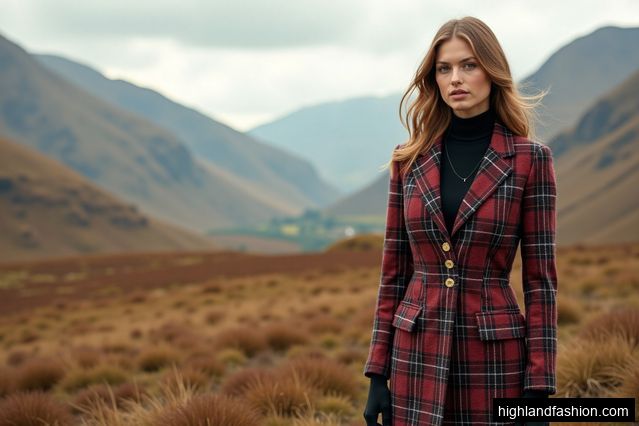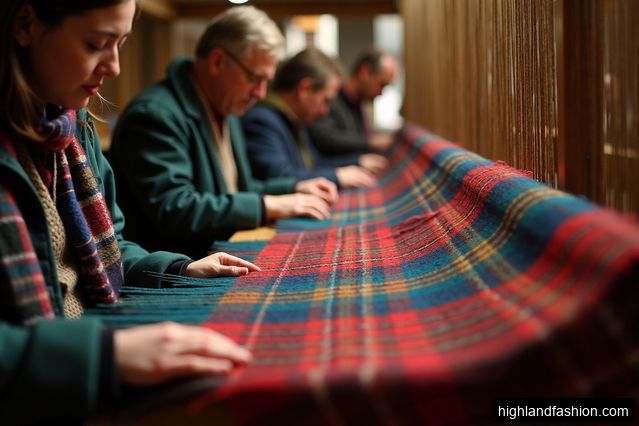Introduction
Have you ever paused to ponder the journey of tartan patterns, once a symbol of scottish clans and heritage, which have now become an inseparable part of contemporary fashion trends? Isn't it intriguing how these geometric designs travelled from the windswept highlands to the glitz and glamour of high fashion runways? Indeed, the evolution or rather revolution in tartan's role in the fashion industry is as vibrant as its colorful history. In this post, we will delve deeper into this fascinating transformation - exploring how tartan has transitioned from traditional attire into a design embraced by haute couture.
Tartan's Traditional Roots
The historical significance of tartan patterns can't be overstated. They were intimately associated with different Scottish clans, each boasting its unique pattern that represented their lineage. These patterns weren’t just about aesthetics; they were woven using specific colors for identification purposes – visual badges worn with pride and honor. The intricate designs and vibrant hues showcased on HighlandFashion.com pay homage to these ancestral roots while simultaneously infusing modern interpretations that cater to today’s discerning fashion enthusiasts.
An interesting case study here would be Clan Douglas' traditional Black Tartan: A striking combination of black and green checks interwoven with white stripes representing their heraldic colours. While being deeply-rooted in tradition, this classic pattern has found its place even in contemporary attires like those on HighlandFashion.com.
From Clans to Catwalks: Tartan in High Fashion
The leap from Scottish clans to catwalks began when innovative designers started recognizing tartan as a versatile fabric that could be incorporated into various styles. Today, premium scottish-inspired clothing like those available on HighlandFashion.com aren't just garments; they are symbols of luxury and elegance. Iconic designers have showcased tartan in their collections, thus elevating it from everyday wear to haute couture.
One notable instance is Alexander McQueen's Autumn/Winter 2006 collection where he masterfully reimagined the traditional 'Royal Stewart Tartan' into chic dresses, turning heads in the high fashion scene. This move not only established the tartan pattern as a staple in luxury fashion but also exposed its potential for creative reinterpretation.
Tartan in Contemporary Streetwear
While tartan has made a significant splash in high fashion, it hasn’t stopped there – it has found its place even within the realm of streetwear. Its versatility and visual appeal have made it a popular choice among designers creating edgy, modern looks. From minimalistic tartan accessories like scarves or bags to full ensembles flaunting bold patterns, HighlandFashion.com offers an array of pieces that embody this trend.
A perfect example would be Kanye West sporting an oversized red and black lumberjack shirt during one of his concerts - illustrating how effortlessly the classic pattern blends with contemporary street style.
Tartan's Influence on Today's Fashion Industry
The influence of tartan patterns extends far beyond clothing lines today; infiltrating everything from footwear to accessories – truly demonstrating the wide-ranging impact of this traditional scottish textile design. Moreover, distinctive color combinations inherent to tartan have also influenced color trends within the industry. For instance, the 'Black Watch' tartan pattern with its timeless mix of dark green and navy blue has inspired numerous fashion items, from shoes to handbags.
Conclusion
The evolution of tartan patterns from traditional Scottish clans to high fashion runways is a testament not just to their timeless appeal but also their versatility. As evident from examples showcased by HighlandFashion.com, whether incorporated into haute couture collections or infused into contemporary streetwear styles, tartan continues to be a significant element in the fashion industry's evolution. With its rich history and vibrant aesthetic, we can expect this classic pattern not only to maintain its presence but continue influencing future trends – much like a thread that connects our past with our future.










